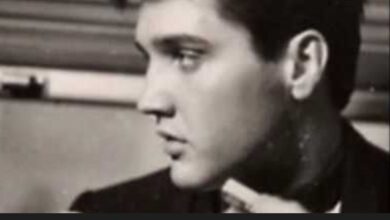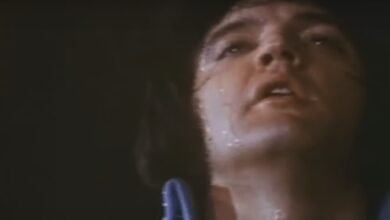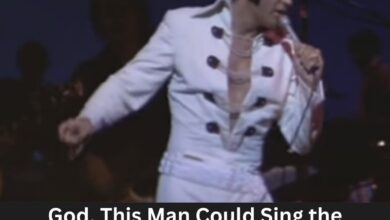The ’68 Comeback Special Was, In My View, The Pinnacle Musical Performance Of His Career
“Baby What Do You Want Me to Do” has roots deeply embedded in the blues tradition, illustrating a universal theme of longing and uncertainty in romantic relationships. Originally recorded by Jimmy Reed, the track exemplifies the distinctively laid-back yet powerful style of blues music that resonates with listeners. Reed’s version features a blend of expressive guitar work and soulful vocals, characteristic of his music, which often reflects the struggles of love and life’s challenges.
When Elvis Presley took on the song during his 1968 Comeback Special, he brought his own unique flair to it, transforming it into a vibrant performance that showcased his ability to reinterpret and enliven existing works. At the time, Elvis was looking to reconnect with his musical roots, and the Comeback Special provided him the perfect platform. It marked his return to live performance after years of focusing on the film industry. The electricity in the air was palpable as he embraced the blues and rock and roll elements of his early career.
The driving guitar riff that opens the performance sets a compelling precedent, drawing listeners into the song’s emotive landscape. As Elvis’ voice enters, it carries a rawness rarely seen in his earlier commercial hits. The performance features a tight band that complements his vocals with a rhythmic intensity that captures the essence of blues music. It’s not just a performance; it’s an experience that allows audiences to feel the passion behind the lyrics, which speak to submission and the yearning for understanding in a turbulent romance.
Elvis’s vocal delivery is one of the hallmarks of the performance. His signature growl adds a sense of urgency and depth to the lyrics, enhancing the song’s emotional weight. The combination of his vocal prowess and the band’s dynamic instrumentation creates a moment of musical synergy that is both exhilarating and haunting. This rendition stands out as a testament to Elvis’ ability to breathe new life into a classic while remaining faithful to its emotional core.
The expanded version of the song features extended instrumental breaks where the musicians, including the talented guitarists, take solos, showcasing their virtuosity. This added layer of musical exploration deepens the listener’s engagement with the performance. The improvisational nature of these breaks highlights the spontaneity that live music can offer, something that was often scripted in Elvis’s earlier productions.
Elvis’ return to the live stage through the Comeback Special was not just a revival of his career but also an acknowledgment of the musical influences that shaped him. This performance of “Baby What Do You Want Me to Do” serves as a bridge connecting his rock and roll roots with the influences of blues that were pivotal in his formative years. The audience experiences a rich tapestry of sound and emotion that transcends mere entertainment.
Throughout the special, Elvis demonstrated his versatility and depth as a performer. By choosing “Baby What Do You Want Me to Do,” he indicated his desire to explore the darker, more soulful side of his artistry. This selection, coupled with the intense performance delivered that evening, contributed significantly to the show’s acclaim, highlighting Presley’s ability to connect with both the material and his audience.
The success of the Comeback Special proved to be a pivotal moment for Elvis. With the world watching, he reaffirmed his status not just as a pop icon but as a genuine artist who could adapt and evolve. “Baby What Do You Want Me to Do” became emblematic of this resurgence, a performance that would go on to be remembered as one of his defining moments.
Elvis Presley’s influence on music extends far beyond his performances; he has been a cultural touchstone for generations. The 1968 Comeback Special is celebrated not merely for its music but for its impact on popular culture, showcasing Elvis’ ability to resonate with the social and musical changes of the time. By bridging his past with contemporary influences, he set the stage for future artists who would also navigate the realms of popularity and authenticity.
The legacy of “Baby What Do You Want Me to Do” continues to endure as it is revisited by countless artists across various genres. As a classic blues standard, it reminds listeners of the nuances of love and longing. The song, particularly through Elvis’ iconic performance, has transformed into a timeless exploration of human emotion, reflecting both heartache and desire, making it a staple in the canon of American music history.
In understanding the full scope of Elvis’ artistry, it’s crucial to acknowledge his roots and the influences that shaped him. While he became synonymous with rock and roll and pop, his deep connection to blues, evident in performances like “Baby What Do You Want Me to Do,” reaffirms the profound impact that these genres collectively have on the American musical landscape. The intertwining of blues with rock and roll creates a rich, multifaceted narrative of musical expression that continues to inspire artists and audiences alike.



